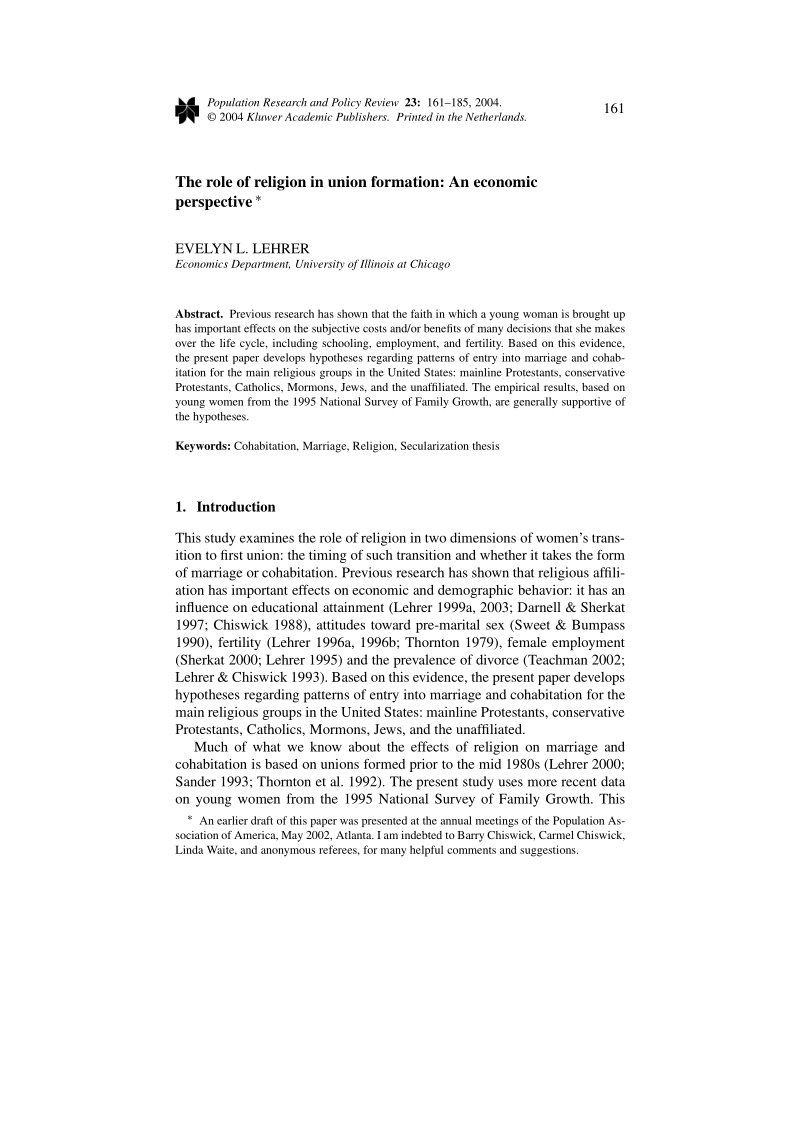Study finds that LDS and conservative Protestants are more likely to marry early; LDS less likely to cohabitate.
- Type
- Academic / Technical Report
- Source
- Population Research and Policy Review Non-LDS
- Hearsay
- Secondary
- Reference
Evelyn L. Lehrer, "The Role of Religion in Union Formation: An Economic Perspective," Population Research and Policy Review 23, no. 2 (2004): 167, 173-177,
- Scribe/Publisher
- Population Research and Policy Review
- People
- Population Research and Policy Review
- Audience
- Reading Public
- Transcription
Women brought up as conservative Protestants and as Mormons are expected to marry early, because their faith encourages an orientation to home activities and also encourages very high fertility in the case of Mormons.
. . . .two groups display a pattern of very early entry into first marriage: conservative Protestants (t = 4.3) and Mormons (t = 2.5); the probability of marriage by age 20 is fully 0.17 for members of these groups, almost twice the value for the reference category. . . . informal coresidential arrangements are least likely for Mormons (t = –1.9), who have a probability of cohabitation by age 20 of only 0.12.
. . . .Although members of all religious denominations are entering marriage later, the differences by religious affiliation in patterns of entry into marriage and cohabitation have remained remarkably stable. Conservative Protestants and Mormons continue to display an early entry into marriage, while Jews and Catholics continue to delay such entry.
- Citations in Mormonr Qnas
The B. H. Roberts Foundation is not owned by, operated by, or affiliated with the Church of Jesus Christ of Latter-day Saints.

